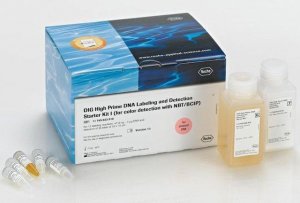- Производитель:
- Roche
- in Southern blots
- in northern blots
- in dot blots
- in colony and plaque hybridizations
- for all types of filter hybridization
- for single-copy gene detection in total genomic DNA, even from organisms with high complexity, for example, human, barley and wheat
| usage | sufficient for 12 labeling reactions, sufficient for 24 blots |
| Quality Level | 100 |
| Торговая марка | Roche |
| greener alternative product characteristics | Designing Safer Chemicals Learn more about the Principles of Green Chemistry. |
| shipped in | dry ice |
| storage temp. | 20°C |
| pictograms | GHS05 |
| signalword | Danger |
| hcodes | H315 - H318 |
| pcodes | P264 - P280 - P302 + P352 - P305 + P351 + P338 + P310 - P332 + P313 - P362 + P364 |
| RIDADR | NONH for all modes of transport |
| WGK Germany | WGK 2 |
| Flash Point F | does not flash |
| Flash Point C | does not flash |
Получите коммерческое предложение в течение 1 часа
Менеджер подготовит коммерческое предложение и позвонит, если понадобится уточнить детали вашего заказа

С 2010 года мы поставляем оборудование с заводов Европы. Берем на себя все — от подбора оборудования до внедрения на предприятии

Все сотрудники имеют высшее образование, закончили ведущие химические вузы страны, такие как РХТУ им Менделеева.

У большинства компаний срок ожидания составляет 10-12 недель.

Оборудование хранится на сухом отапливаемом складе, где поддерживается ровная температура.

Работаем с PonyExpress и Деловыми линиями. Вы также можете выбрать свою транспортную компанию или забрать товар со склада в Москве.

В случае любых неполадок за свой счет выполним ремонт в сервисном центре или на заводе-изготовителе. Или бесплатно заменим прибор на новый.

Производим пуско-наладку оборудования, валидацию, обучение сотрудников. Если нужно, привлекаем инженеров с заводов- изготовителей.















































































































































